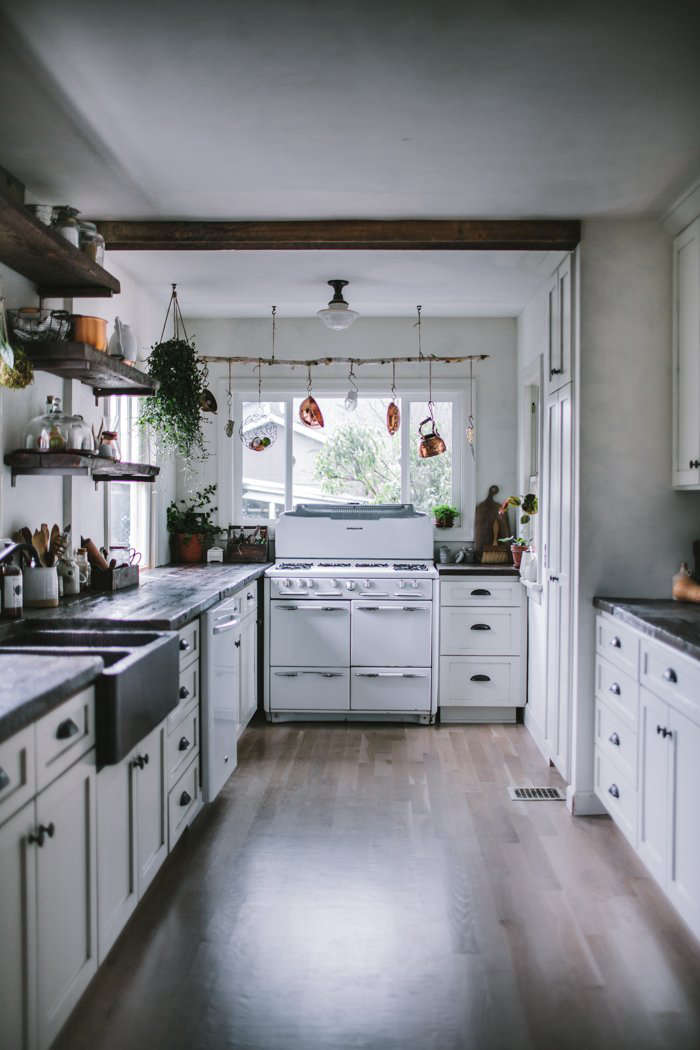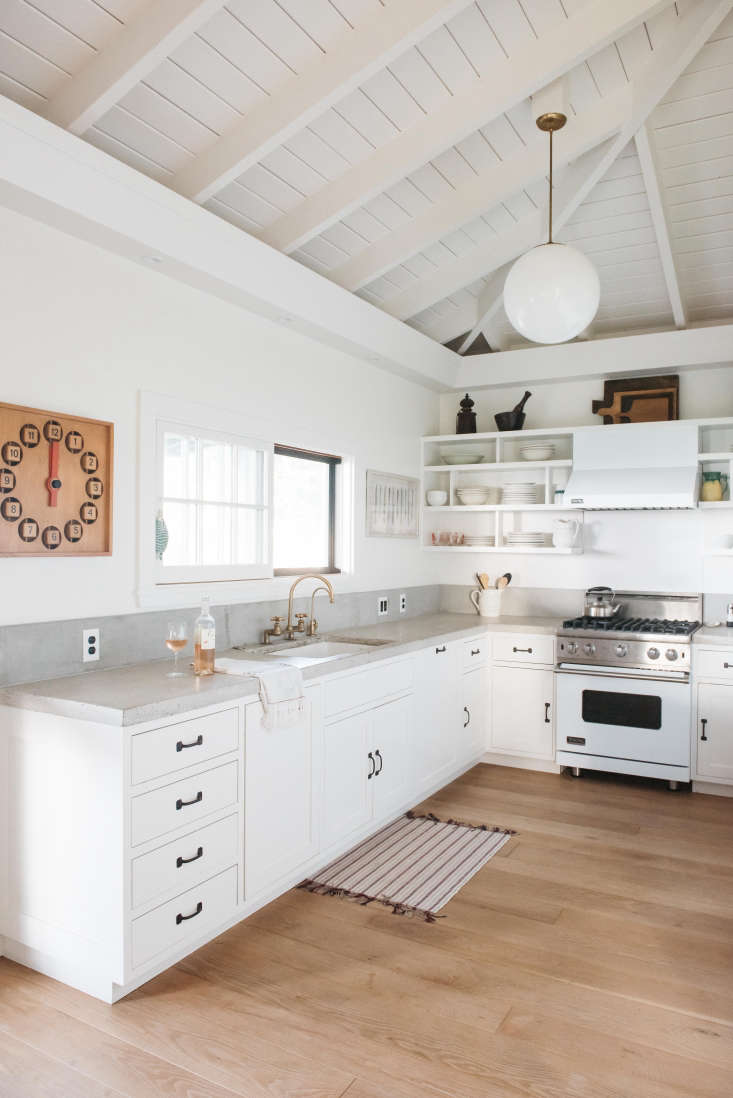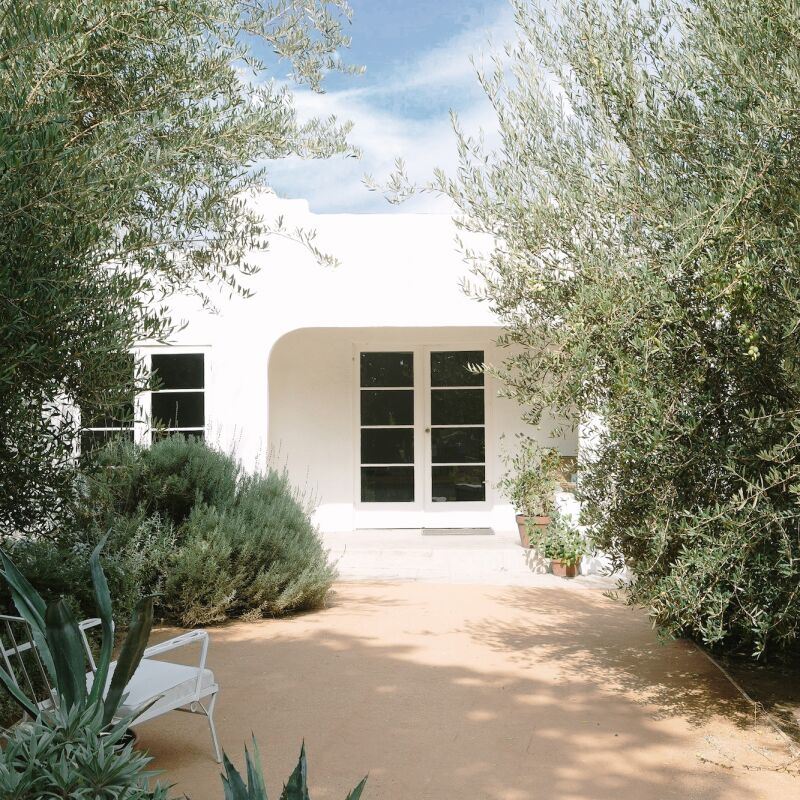If you like to cook, getting a new range can be a real treat. Cooking will be even more pleasurable with all the new technology available. You may even decide to spring for a professional-style range, with high-output burners and other bells and whistles. But before you make your decision, there are a few things to consider.
In this miniseries we’re answering common questions about replacing your appliances. To get some expert tips and advice, we’ve consulted with architect Andrea Zaff of Boston-based Zaff Architecture, who specializes in helping her clients source the best devices for their needs. (See also our posts on what to know when replacing your fridge, dishwasher, and washer/dryer.)
Here are nine questions often asked by homeowners who are planning to swap out their old range for a gleaming new one.

How do I know if my new range will fit in the existing space?
Whenever you’re shopping for a new appliance, the best advice is “measure, measure, measure.” Once you know your available space, compare that with the specifications of the model you intend to buy.
That said, ranges tend to come in standard sizes, and if you’re replacing your old stove with another the same size, you should be fine. The most common size for a range (a combination of cooktop and oven) is 30 inches wide, 36 inches high (so the top is flush with the typical kitchen counter), and 25 inches deep—though the oven door handle can add a few inches. Cooks who prefer six burners might opt for a 36-inch range, and there are a lot of these on the market.
A compact range is typically 24 inches, but can be as narrow as 20 inches.
Professional-style ranges (such as those made by Viking, Wolf, and Thermador) can be 30, 36, 48, or 60 inches wide; some are taller than the standard 36-inch height.

What’s the difference between a slide-in range and a stand-alone range?
A slide-in range sits flush with the countertop and cabinets once it’s installed, slightly overlapping the countertop for a seamless custom look. The sides might be finished or, since they’re not visible, unfinished.
A freestanding (or stand-alone) range is also the same height as the countertop, but without an overlap, which leaves a narrow, hard-to-clean gap between range and counter edge. Because it has finished sides, the freestanding range doesn’t have to butt up against a counter or cabinets.
How can I make space to upsize to a larger range?
“Depending on your kitchen layout, this usually requires adjusting the countertop and remodeling the cabinetry,” says Andrea Zaff. “Removing one cabinet doesn’t always solve the problem, as you might then have space left over. You could build a new smaller cabinet, or add a filler panel that matches the other cabinets.”

Can I switch from an electric range to a gas range?
“Going from electric to gas is relatively easy, as long as gas is offered in your community,” Andrea says. If you already have a capped gas line in your kitchen, the installer can quickly hook up your new stove to the gas line. If you have an existing gas line but it’s too far from where you plan to install the new range, you’ll need a licensed plumber to run a new line. The cost depends on how long the line needs to be.
Adding a new gas line to your home involves more work. Ask a licensed plumber what the job will entail.
Today’s gas stoves also require electricity, since these ranges no longer use pilot lights to ignite the burners. The ignition source comes from an electric igniter located at each burner. But while an electric stove uses 240 volts, your new gas stove requires only 120 volts. A licensed electrician can convert your existing wiring configuration to provide the 120-volt circuit.

Can I switch from an electric (or gas) range to a dual-fuel range?
In a dual-fuel range, the cooktop is gas and the oven is electric. If you’re replacing an electric range, you already have the 240-volt electrical line required by the dual-fuel range; you’ll only need to add the gas line (see above).
“Switching from a gas range to a dual-fuel range is a bit more complicated,” says Andrea. A gas range operates on 120 volts of power, but the dual-fuel range requires 240 volts. So you’ll need a licensed electrician to run a new larger electrical wire from the panel breaker to the stove location and hook up a new 240-volt receptacle there.

I’m upgrading to a professional range. What else do I need to upgrade?
First, if you’re trading up to one of the larger professional-style ranges, make sure it will fit through your doorways!
Unlike the commercial ranges used in restaurant kitchens, a pro-style range can be installed next to cabinets, without extra insulation or a sprinkler system. These ranges all have gas burners, but some are dual-fuel, with electric ovens. If you have a gas stove already, the same gas supply will suffice, but you may need to upgrade the electrical circuit to 240 volts for an electric oven.
You may also need to upgrade your ventilation system, since a vent hood that exhausts outside is required by code (with a few exceptions) for a pro-style range. The more BTUs the range puts out, the more air (measured in cubic feet per minute, or CFM) the blower in your exhaust hood needs to remove, so your choice of hood will depend on the CFM rating. (See Remodeling 101: The Verdict on Vented vs. Non-Vented Range Hoods for more.)
Your local building code may also require what’s called “make-up air” to replace the exhausted air with fresh new air. This means more ducting and another vent in your ceiling or wall.
Finally, you may want to upgrade your range hood for aesthetic reasons, just to have matching pieces by the same manufacturer.

What do I need to know about installing my new range in a different spot in the kitchen?
Several modifications could be involved, depending on the location and your existing setup. You may need a plumber to extend the gas line to reach your new range (see above). If you don’t have the proper electrical circuit to power your new range, you may also need an electrician to make some changes (also above). And for effective ventilation, you may have to install a new range hood with a new duct to vent to the outdoors.

How can I save energy—and money—with a new range?
While the EPA doesn’t yet provide Energy Star ratings for ranges, you can look for new models that save energy, money, and time. In general, Andrea says, “Keep it simple and select only the size and features you’ll use to avoid excess use of materials and energy.” She also offers these guidelines to help you choose.
- Gas ranges heat up food more quickly than electric ranges, which saves energy and cooking time.
- Stovetops with induction elements under a glass-ceramic surface use about half the energy of a typical electric stove with coils.
- Some new ranges offer energy-saving hybrid options, with both radiant and induction heating.
- Convection ovens continuously circulate heated air, reducing the required temperature and cooking times, and cutting energy use by about 20 percent.
- Self-cleaning conventional ovens have more insulation than other conventional ovens, making them more energy-efficient.
- Some ranges have speed-cleaning settings that use half the energy of normal cleaning cycles.

What do I do with my old range?
The retailer you’ve bought from will probably collect your old range when they drop off the new one. But make sure you ask whether the company is a certified recycler of old appliances and will provide green services.
If you decide to dispose of your old range yourself, here are some ways to do it without damaging the environment:
- If your electric stove still works, donate it to a good cause, such as Habitat for Humanity or Eco Building Bargains. (Gas stoves can’t be donated because of the danger of leaks and the possible presence of mercury, used as a safety component in older gas ranges to make sure the gas valve is closed when the pilot light isn’t on.)
- If your range isn’t in good enough condition to donate, ask your state energy office or local water and power company if they have a recycling program.
- Contact scrap metal recyclers in your area. Many components of old appliances can be recycled and used in construction.
- Ask your local municipal recycling office whether they’ll pick up the stove from your curb. If not, locate a certified recycling facility in your area and drop it off there.
For more advice on sourcing ranges, ovens, and stoves, see:
- Decoding BTUs: How Much Cooking Power Do You Really Need?
- Remodeling 101: The Verdict on Vented Vs. Non-Vented Range Hoods
- 10 Easy Pieces: The Best Skinny Kitchen Ranges (Freestanding 24-Inches)
Finally, get more ideas on how to evaluate and choose your kitchen range or oven in our Remodeling 101 Guide: Kitchen Ranges & Ovens.




Have a Question or Comment About This Post?
Join the conversation (1)